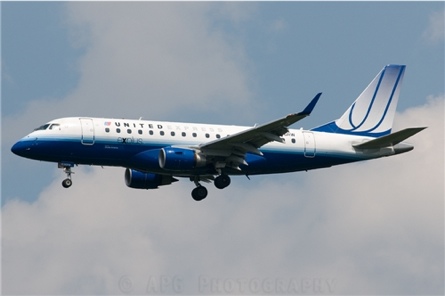While the economics of operating 50-seat jets has put those aircraft at a disadvantage to larger 70 and 90-seat aircraft, the fundamentals of their emergence late in the last decade remain intact: namely US pilot scope clauses.
Scope caps the number of regional jets operated by carriers on behalf of their partners, and also limits the number of seats per aircraft. United, Delta, Northwest and US Airways all got some relief on the 50-seat cap during their respective stints in Chapter 11 during the early 2000s. But American and Continental are still largely constrained to operating 50-seat aircraft.
As Bombardier works to secure orders for its 100-seat CRJ1000 and CSeries aircraft and Embraer’s orderbook tilts towards the larger end of its 170/190 E-Jet family, it appears that aircraft with roughly 76-to 86-seats are becoming the new dividing point between regional and mainline aircraft. A few regional carriers operate aircraft in the 86-seat range, but most of the larger regional jets are constrained to the 76-seat category.
Some airline executives are taking a sober view of any further loosening of scope restrictions as Delta Connection senior vice president Don Bornhorst recently told Regional Airline Association convention attendees he was not optimistic about scope relief for Delta or the industry. He predicts the CSeries and E-195 are destined to become mainline aircraft.
United seems less cynical than Delta as it begins contract talks with its pilots. Through its four-year restructuring that ended in 2006 United ultimately struck a deal with pilots that currently allows for an unlimited number of 70-seat jets with an 80,000lb weight limit. Certain limitations are associated with that somewhat unfettered access including fewer regional block hours than mainline. There are also some restrictions on nonstop 70-plus seat operations between United hubs and specific larger markets such as New York and Washington, DC, unless those operations are cost-effective, according to data from F&H Solutions Group.
Carrier vice president operations and planning for United Express Cindy Szadokierski told convention attendees that in current pilot contract talks “obviously scope is an issue we need to work our way through. In this environment with capacity reductions we see opportunities on both sides to move forward and meet both our needs”.
 |
|---|
© AGP Photography |
While acknowledging the challenge of predicting with any clarity the outcome of those labour talks Bombardier Commercial Aircraft president Gary Scott does offer that he “has no doubt majors would like to increase the number and size of aircraft they operate in those [regional environments]. Both small CSeries and larger CRJs would fill the requirement should scope be relaxed”.
But mainline pilot resistance to scope remains steadfast as evidenced by the roughly 32-month long contract talks between American Airlines and its pilots.
Seeking to get on a level footing with its US mainline counterparts American aims to secure relief to operate 76-seat jets with a maximum takeoff weight of 89,000lbs. In a recent round of negotiations with pilots American management compared the 25 single-class CRJ700s flown by its subsidiary American Eagle to 209 larger 70-plus seat regional jets flown by Delta Connection carriers, with 149 of those aircraft featuring a two-class configuration. United, says American, operates 112 larger regional jets configured with a two-class offering.
American pilots scoffed at the presentation, dismissing it as a “pitch for APA [the Allied Pilots Association] to allow a scope exception permitting Eagle to fly a 76-seat Embraer in a two-class configuration”.
The reaction by American pilots appears to be consistent with a theory posed by industry analyst Michael Boyd to attendees at the RAA convention that US pilots are “adamant” of not letting go of scope and “not loosening those strings”.
Source: Airline Business








































